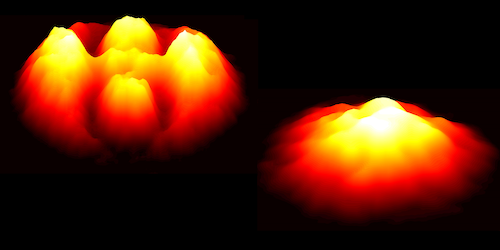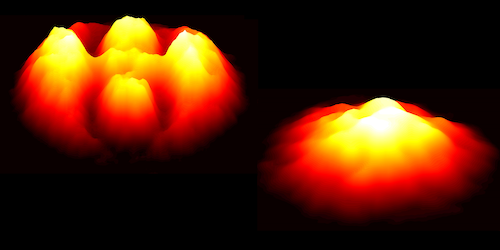Undoing a Quantum Knot
Physical theories for many states of matter predict the existence of defects—vortices, knots, or monopoles—whose topology makes them exceptionally stable. This “topological protection” may explain persistent structures ranging from so-called skyrmions in magnetic materials to stringy textures of the cosmos. To better understand these defects, researchers create and study them in highly controllable systems like quantum condensates. Now, Tuomas Ollikainen of Aalto University, Finland, and coworkers have prepared a knot in a Bose-Einstein condensate (BEC) and then perturbed the condensate so as to “untie” the knot. Their work delivers the first time-resolved “movie” of a quantum knot’s decay.
Building on a 2016 study, the researchers prepared a knot by applying a spatially structured magnetic field to a BEC condensate of rubidium atoms. The resulting knot consisted of a particular configuration of magnetic ordering: Lines plotting the local magnetic axis within the BEC formed closed, mutually interlocked circles. The team perturbed the system by removing the field and then imaged the BEC to watch how the knot evolved.
The experiments—carried out at Amherst College in Massachusetts—revealed two stages of the BEC dynamics. For the first few milliseconds after the perturbation, the knot persisted but the condensate state changed, with several ferromagnetic islands emerging within the initially nonmagnetic BEC. Within a few hundred milliseconds, however, the knot fully dissolved, and a ferromagnetic phase formed at the periphery of the condensate, surrounding a nonmagnetic core. A different topological defect appeared between the two magnetic regions, with the defect consisting of atomic spins arranged in a vortex. Finding similarities with previous theoretical studies on monopole defects, the researchers suggest that this transition into a spin vortex could be a common feature of many types of topological defects.
This research is published in Physical Review Letters.
–Matteo Rini
Matteo Rini is the Deputy Editor of Physics.





